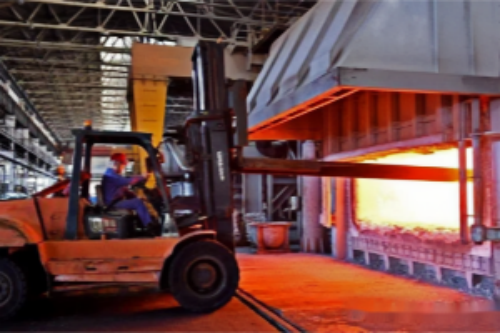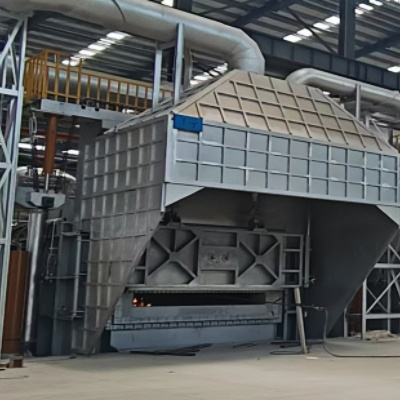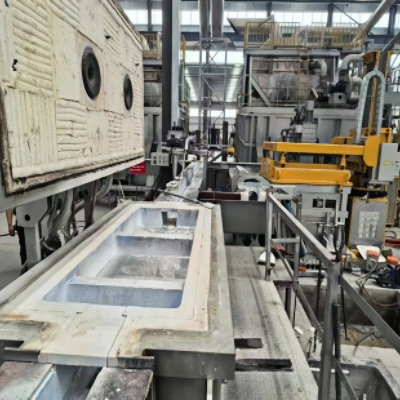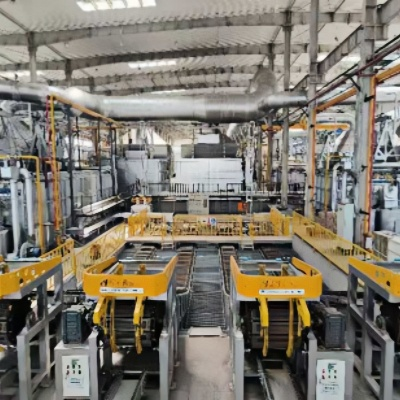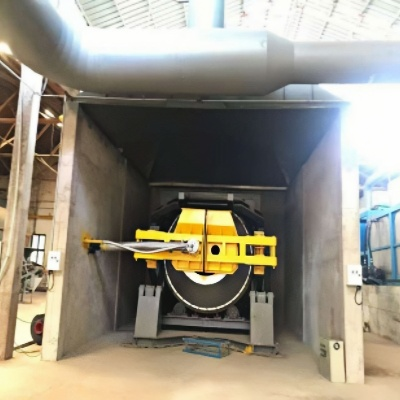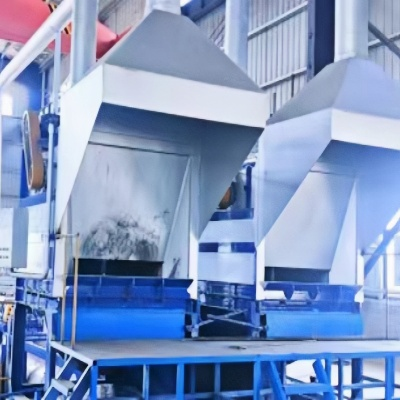As a key initial stage in aluminum alloy production, cost control of aluminum alloy melting and casting is crucial for the economic benefits and market competitiveness of enterprises. This article explores in depth the cost control measures for the process of aluminum alloy melting and casting (including electrolytic aluminum+scrap aluminum, melting, purification refining, and flat ingot casting), analyzes in detail the cost composition of each link, and proposes targeted strategies from multiple aspects such as raw material selection and management, process optimization, equipment maintenance and upgrading, and production management. The aim is to provide reference for aluminum alloy melting and casting enterprises to reduce costs and improve efficiency, and to help enterprises achieve sustainable development in fierce market competition.
Aluminum alloys are widely used in various fields such as aerospace, automotive manufacturing, and construction due to their low density, high strength, and good corrosion resistance. Aluminum alloy melting and casting is the process of melting aluminum and other alloying elements into aluminum alloys that meet the requirements, and casting them into specific shapes of billets, such as flat ingots, to provide a foundation for subsequent processing. Cost control is one of the core contents of enterprise operation and management in the process of aluminum alloy melting and casting. With the increasingly fierce market competition, factors such as fluctuations in raw material prices and rising energy costs have brought enormous cost pressure to enterprises. Reducing the cost of aluminum alloy casting through effective measures can not only increase the profit margin of enterprises, but also enhance their pricing advantage and risk resistance in the market. Therefore, in-depth research on cost control in the aluminum alloy casting process is of great practical significance.
2.Analysis of Cost Composition of Aluminum Alloy Melting and Casting
2.1 Raw material cost
2.1.1 Electrolytic Aluminum and Waste Aluminum
The raw materials for aluminum alloy casting mainly include electrolytic aluminum and scrap aluminum. Electrolytic aluminum has high purity and stable quality, but its price is relatively high, influenced by factors such as alumina prices, electrolytic production processes, and energy costs. Scrap aluminum has a cost advantage, usually priced lower than electrolytic aluminum, and recycling is in line with environmental protection concepts, which can reduce resource waste and carbon emissions. However, scrap aluminum has a complex composition and high impurity content, requiring strict pretreatment and composition testing to ensure that it meets the requirements for melting and casting.
2.1.2 Intermediate alloys and additives
To adjust the chemical composition and properties of aluminum alloys, intermediate alloys (such as aluminum titanium boron alloys, aluminum copper alloys, etc.) and various additives (such as refining agents, modifiers, etc.) need to be added. Although these materials are used in relatively small quantities, their prices are high and have a certain impact on costs. For example, aluminum titanium boron alloy is commonly used to refine the grain size of aluminum alloy and improve its mechanical properties. Its market price is about 30000 yuan/ton. In some specific aluminum alloy melting and casting, 1 kilogram needs to be added per ton, which alone increases the cost by 30 yuan.
2.2 Energy Costs
During the casting process, energy consumption runs through the entire process, mainly including electricity, natural gas, coal, etc. The smelting process requires a large amount of heat energy to melt aluminum and alloy raw materials, and the energy consumption of the heating furnace accounts for a relatively large proportion. For example, using a natural gas heating furnace to melt aluminum alloy, the natural gas consumption per ton of aluminum alloy is about 60 cubic meters depending on the size and efficiency of the furnace. Calculated at the current natural gas price of 4 yuan/cubic meter, the natural gas cost for the melting process alone reaches 240 yuan/ton. In addition, the production of electrolytic aluminum itself is also a high-energy consumption process. If a company uses its own power plant for power supply, the construction, operation, and maintenance costs of the power plant, as well as the fuel costs required for power generation, will indirectly affect the energy costs of aluminum alloy melting and casting.
2.3 Auxiliary material cost
Auxiliary materials include refractory materials, covering agents, filtering materials, etc. Refractory materials are used for building furnaces, flow channels, etc. Their quality and service life directly affect the continuity and cost of production. High quality refractory materials are relatively expensive, but their replacement frequency is low, which can reduce overall costs. For example, the price of a certain brand of high-grade refractory bricks is 20 yuan/piece, with a service life of 3000 times, while the price of ordinary refractory bricks is 10 yuan/piece, with a service life of 1000 times. After calculation, using high-grade refractory bricks in large-scale production is actually more cost-effective. Covering agents are used to cover the surface of aluminum liquid to prevent oxidation and gas absorption, while filtering materials are used to remove inclusions from aluminum liquid and improve the quality of aluminum alloys. The procurement and usage costs of these materials cannot be ignored.
2.4 Equipment depreciation and maintenance costs
There are various types of aluminum alloy melting and casting equipment, such as melting furnaces, refining furnaces, casting machines, etc. The equipment has a high purchase cost and needs to be depreciated and amortized over its service life. Meanwhile, the daily maintenance, regular inspection, and replacement of components of the equipment require a significant investment of funds. A large smelting furnace can cost millions of yuan, and based on a 10-year depreciation calculation, the annual depreciation cost is several hundred thousand yuan. If the equipment is not maintained properly and malfunctions occur frequently, it will not only increase maintenance costs, but also cause production losses due to shutdown, further increasing costs.
2.5 Labor Costs
From raw material inspection, batching, smelting, refining to casting, all stages require professional technicians and operators. Labor costs include employee salaries, benefits, training expenses, etc. With the changes in the labor market, labor costs are increasing year by year. In some coastal areas, the per capita annual salary and welfare expenditure of aluminum alloy casting enterprises can reach about 100000 yuan. If a medium-sized casting workshop has 200 employees, the annual labor cost can reach as high as 20 million yuan.
2.6 Waste loss cost
During the casting process, waste products may be generated due to various reasons such as unqualified composition, casting defects, etc. Waste not only wastes raw materials, energy, and labor, but also incurs additional processing costs. The high or low scrap rate directly affects the cost of waste loss. If the enterprise has a scrap rate of 1.5% and produces 200000 tons of aluminum alloy annually, with a cost of 800 yuan per ton of aluminum alloy, then the increased cost due to scrap losses is 2.4 million yuan. Reducing the scrap rate is one of the important directions for cost control.
3. Cost control measures
3.1 Raw material procurement and management
3.1.1 Optimize raw material ratio
Accurately calculate the optimal ratio of electrolytic aluminum and scrap aluminum based on the quality requirements and performance indicators of aluminum alloy products. Establish a raw material database to record and analyze in detail the composition, impurity content, price, and other information of electrolytic aluminum and scrap aluminum from different batches and sources. Determine the maximum usable proportion of scrap aluminum while ensuring product quality through experiments and simulations. For example, in the production of 6063 aluminum alloy, after multiple tests and verifications, when the proportion of scrap aluminum is controlled at 30% -40%, it can ensure that the product quality meets the standards and achieve effective cost reduction. At the same time, adjust the raw material ratio flexibly according to market price fluctuations. When the price of scrap aluminum drops significantly, increase the proportion of scrap aluminum usage appropriately; On the contrary, when the price advantage of electrolytic aluminum is obvious, increase the amount of electrolytic aluminum used.
3.1.2 Strengthen the pre-treatment of scrap aluminum
The pre-treatment quality of scrap aluminum directly affects the casting effect and product quality, thereby affecting costs. Establish a comprehensive waste aluminum pretreatment process, including sorting, dismantling, cleaning, crushing, and impurity removal. Advanced sorting techniques such as magnetic separation, gravity separation, flotation, etc. are used to effectively separate impurities such as iron, copper, and plastic from waste aluminum. For waste aluminum with surface oil stains and coatings, appropriate cleaning processes such as chemical cleaning, ultrasonic cleaning, etc. should be used to ensure the cleanliness of the waste aluminum surface. Crush the sorted and cleaned waste aluminum to achieve uniform particle size for subsequent melting. By strengthening pre-treatment, the utilization rate of waste aluminum can be improved, the scrap rate caused by impurities and the difficulty of melting can be reduced, thereby lowering costs.
3.1.3 Establish a long-term stable supply channel for raw materials
Establish long-term strategic partnerships with high-quality electrolytic aluminum suppliers and scrap aluminum recycling enterprises, sign long-term supply contracts, and ensure stable supply of raw materials and relatively stable prices. Agree on a price adjustment mechanism in the contract, adjust prices reasonably based on market conditions and fluctuations in raw material costs, and reduce price risks. At the same time, actively expanding raw material supply channels and maintaining contact with multiple suppliers to avoid shortages or excessive price fluctuations caused by single supplier issues. Regularly evaluate and assess suppliers to ensure that their product quality and services meet the requirements of the enterprise. Through stable supply channels, enterprises can obtain more favorable procurement prices and better supply conditions, reducing procurement costs.
3.2 Smelting process optimization
3.2.1 Improving Smelting Efficiency
Adopting advanced melting equipment and technology, such as high-efficiency and energy-saving melting furnaces, electromagnetic stirring technology, etc., to improve melting speed and efficiency. Efficient and energy-saving melting furnaces have the characteristics of fast heating speed and high thermal efficiency, which can shorten melting time and reduce energy consumption. For example, a certain enterprise adopted a new type of regenerative melting furnace to replace traditional melting furnaces, which shortened the melting time by 20% and reduced natural gas consumption by 30%. Electromagnetic stirring technology can make the heating of aluminum liquid more uniform during the melting process, accelerate the dissolution and diffusion of alloy elements, and improve the quality and efficiency of melting. Reasonably arrange the melting batches and production plans, reduce the empty time and heating and cooling frequency of the melting furnace. By optimizing production scheduling, ensuring continuous and stable operation of the smelting furnace, fully utilizing its production capacity, and further reducing energy consumption and equipment depreciation costs per unit product.
3.2.2 Reduce burn damage
Burning is an inevitable problem in the melting process of aluminum alloys, but the burning rate can be reduced through a series of measures. Strictly control the melting temperature and time to avoid aluminum liquid overheating and prolonged stay at high temperatures. Excessive temperature and prolonged time will intensify the oxidation and absorption of aluminum, increasing burn damage. Based on the composition and characteristics of aluminum alloy, develop a reasonable melting temperature curve, while ensuring the melting effect, try to reduce the melting temperature and shorten the melting time as much as possible. By using effective covering agents and protective gases, a protective film is formed on the surface of the aluminum liquid to prevent it from coming into contact with air and reduce oxidation and burning losses. For example, using inert gases (such as argon) to protect the atmosphere of the melting furnace can significantly reduce the burn rate. Improve the slag removal process, use professional slag removal tools and techniques, minimize the carryover of aluminum liquid during the slag removal process, and improve the metal recovery rate.
3.2.3 Waste Heat Recovery and Utilization
During the smelting process, a large amount of high-temperature flue gas and waste heat will be generated. If directly discharged, it not only wastes energy but also causes thermal pollution to the environment. Install waste heat recovery devices, such as waste heat boilers, air preheaters, etc., to recover and utilize waste heat from high-temperature flue gas. Waste heat boilers can convert the heat from high-temperature flue gas into steam, which can be used in production processes or power generation; The air preheater can preheat the combustion air entering the smelting furnace, improve fuel utilization efficiency, and reduce energy consumption. By utilizing waste heat recovery, enterprises can not only reduce energy costs, but also decrease carbon emissions, achieving energy-saving, emission reduction, and sustainable development goals.
3.3 Improvement of Purification and Refining Process
3.3.1 Precise control of refining agent dosage
Refining agents play a crucial role in purifying aluminum alloy melts, removing impurities and gases, but excessive use of refining agents not only increases costs but may also introduce new impurities. By accurately detecting impurities and gas content in aluminum alloy melt, combined with the performance and effectiveness of refining agents, the dosage of refining agents can be accurately calculated. Using advanced detection equipment such as direct reading spectrometers, gas analyzers, etc., real-time monitoring of melt composition and gas content. Establish a mathematical model of the relationship between refining agent dosage and melt quality, continuously optimize refining agent dosage through model prediction and actual production data verification, and reduce refining agent consumption costs while ensuring refining efficiency.
3.3.2 Optimizing Refining Process Parameters
Optimize process parameters such as refining time, temperature, and stirring speed to improve refining efficiency and effectiveness. Different aluminum alloy varieties and melt quality requirements require different refining process parameters. Determine the optimal refining process parameter combination for different aluminum alloys through experimental research and production practice. For example, for certain aluminum alloys that are prone to gas absorption, extending the refining time and increasing the stirring speed can effectively remove gases from the melt; For some aluminum alloys with strict requirements for impurity content, controlling the appropriate temperature during the refining process can avoid secondary pollution of impurities. By optimizing process parameters, improving refining efficiency, reducing scrap rates, and lowering costs.
3.3.3 Adopting advanced purification and refining technologies
With the continuous development of technology, many advanced purification and refining technologies have emerged, such as rotary injection refining technology, foam ceramic filtration technology, etc. The rotary jet refining technology sprays refining agent into the aluminum liquid through a high-speed rotating nozzle, forming tiny bubbles, increasing the contact area between the refining agent and the aluminum liquid, and improving the refining effect. Foam ceramic filtration technology uses the three-dimensional network structure of foam ceramics to filter aluminum liquid, which can effectively remove micron level inclusions and improve the purity of aluminum alloy. Enterprises should actively introduce and adopt advanced purification and refining technologies based on their own production situation and product quality requirements, improve product quality, and reduce cost increases caused by quality problems.
3.4 Flat ingot casting process control
3.4.1 Improve the success rate of casting
Optimize casting process parameters, such as casting speed, cooling speed, crystallizer temperature, etc., to ensure the stability of the slab casting process and improve the casting success rate. Casting speed that is too fast or too slow can lead to defects in the ingot, such as cracks, shrinkage cavities, etc. Determine the optimal casting speed range for different aluminum alloy ingots through experiments and simulations. Reasonably control the cooling rate to ensure uniform temperature distribution during the crystallization process of the ingot, and avoid defects caused by stress concentration due to excessive temperature gradient. Regularly maintain and inspect the crystallizer to ensure its temperature uniformity and surface quality, providing good conditions for ingot casting. Improve the skill level and sense of responsibility of operators, strengthen monitoring and management of the casting process, timely detect and handle abnormal situations, further improve the success rate of casting, and reduce the scrap rate.
3.4.2 Reducing Casting Costs
Optimize the casting process and reduce casting costs while ensuring the quality of the flat ingot. Reasonably design casting molds, improve the service life of molds, reduce the frequency and cost of mold replacement. Adopting advanced mold manufacturing materials and processing techniques to improve the accuracy and wear resistance of the mold. Optimize the use of auxiliary materials in the casting process, such as reducing the amount of release agents and lubricants, and selecting cost-effective auxiliary materials. Strengthen the maintenance and management of casting equipment to ensure its normal operation, reduce equipment failure rates and maintenance costs. By reducing casting costs, the economic benefits of the enterprise can be improved.
3.4.3 Optimizing the dimensional accuracy of flat ingots
Strictly control the dimensional accuracy of flat ingots to reduce the increase in sawing volume and scrap rate caused by dimensional deviations. Establish a comprehensive size detection and control system, monitor the size changes of flat ingots in real-time during the casting process, and adjust process parameters in a timely manner. Advanced online detection equipment, such as laser thickness gauges and contour measuring instruments, are used to accurately measure the thickness, width, length, and other dimensions of flat ingots. Regularly calibrate and maintain casting molds to ensure the accuracy of mold dimensions. By optimizing the dimensional accuracy of the flat ingot, material waste and processing costs in the subsequent processing can be reduced, and the product qualification rate and market competitiveness can be improved.
3.5 Equipment Management and Maintenance
3.5.1 Regular equipment maintenance and upkeep
Develop a detailed equipment maintenance plan and regularly maintain key equipment such as melting furnaces, refining furnaces, and casting machines. The maintenance content includes equipment cleaning, lubrication, fastening, adjustment, and replacement of vulnerable parts. Regularly inspect the operation status of equipment, promptly identify potential faults and hazards, and carry out repairs. For example, regular inspection and cleaning of the combustion system of the smelting furnace to ensure the normal operation of the burner, improve combustion efficiency, and reduce energy consumption; Regularly lubricate and adjust the transmission components of the casting machine to ensure the stability and accuracy of the casting speed. By regular maintenance and upkeep, the service life of equipment can be extended, the failure rate of equipment can be reduced, and the downtime losses and maintenance costs caused by equipment failures can be minimized.
3.5.2 Equipment Upgrade and Renovation
With the advancement of technology, it is necessary to upgrade and transform existing equipment in a timely manner to improve its performance and production efficiency. For example, energy-saving renovations can be carried out on old smelting furnaces, using new types of burners, insulation materials, and control systems to improve thermal efficiency and reduce energy consumption; Upgrade the automation of the casting machine, increase the automation control system and online detection equipment, improve the stability and dimensional accuracy of the casting process, reduce manual intervention, and lower labor costs. In the process of equipment upgrade and renovation, fully consider the production needs and investment returns of the enterprise, choose cost-effective upgrade plans, and ensure that the performance improvement after equipment renovation can effectively reduce costs and improve the economic benefits of the enterprise.
3.5.3 Equipment Failure Prediction and Diagnosis
Introducing advanced equipment fault prediction and diagnosis technology, through real-time monitoring and analysis of equipment operation data, predicting possible equipment faults in advance and taking corresponding preventive measures. By utilizing technologies such as sensors, the Internet of Things, and big data analysis, the operating parameters of devices such as temperature, pressure, vibration, and current are collected to establish a device fault prediction model. When there are abnormal changes in the operating parameters of the device, the system can promptly issue warning signals to remind operators to conduct inspections and maintenance. By predicting and diagnosing equipment failures, it is possible to avoid the impact of sudden equipment failures on production, reduce maintenance costs and production losses, and improve equipment reliability and production efficiency.
3.6 Production Management Optimization
3.6.1 Lean Production Management
Introduce the concept of lean production, eliminate various wastes in the production process, and improve production efficiency and quality. Lean production emphasizes customer demand orientation, achieving maximum utilization of enterprise resources through measures such as optimizing production processes, reducing inventory, and shortening production cycles. In aluminum alloy casting production, just in time (JIT) production is adopted to arrange production plans according to customer order requirements, avoiding overproduction and inventory backlog. Optimize production layout, reduce material handling distance and time, and lower handling costs. Implement 5S management (organization, rectification, cleaning, cleanliness, literacy), create a good production environment, improve employee work efficiency and equipment operation efficiency. By implementing lean production management, we can reduce production costs and enhance the market competitiveness of the enterprise.
3.6.2 Quality Control
Strengthen quality management, establish a sound quality management system, and strictly control the quality of every link from raw material procurement, production process to finished product inspection. Establish strict quality standards and inspection procedures, strengthen the inspection of raw materials, and ensure that the quality of raw materials meets the requirements; Strengthen the monitoring and detection of key process parameters during the production process, and promptly identify and correct quality issues; Strictly inspect the finished products to ensure that the product quality meets customer requirements. By improving product quality, reducing scrap and defective rates, lowering the costs of rework, scrapping, and customer complaints caused by quality issues, the company's reputation and market share can be enhanced.
3.6.3 Employee Training and Incentives
Strengthen employee training to enhance their professional skills and overall quality. Develop personalized training plans for employees in different positions, including operational skills training, safety training, quality management training, etc. Through training, employees can become proficient in production processes and equipment operation methods, improving work efficiency and quality. Establish a reasonable employee incentive mechanism, link employee performance with salary, promotion, etc., and fully mobilize employees' work enthusiasm and creativity. Commend and reward employees who have made outstanding contributions in cost control, quality improvement, technological innovation, etc., encourage employees to actively participate in the company's cost control and management work, and create a good atmosphere for all employees to participate in cost control.
Post time: Jul-16-2025

